-
 Bitcoin
Bitcoin $83,255.2836
-2.28% -
 Ethereum
Ethereum $1,821.6270
-4.98% -
 Tether USDt
Tether USDt $0.9997
-0.02% -
 XRP
XRP $2.0300
-5.62% -
 BNB
BNB $592.2419
-3.00% -
 Solana
Solana $121.1432
-4.53% -
 USDC
USDC $0.9998
-0.01% -
 Dogecoin
Dogecoin $0.1649
-5.26% -
 Cardano
Cardano $0.6493
-4.64% -
 TRON
TRON $0.2344
-0.97% -
 Toncoin
Toncoin $3.9186
-3.26% -
 UNUS SED LEO
UNUS SED LEO $9.3843
1.32% -
 Chainlink
Chainlink $13.0875
-7.63% -
 Stellar
Stellar $0.2581
-5.40% -
 Avalanche
Avalanche $18.3472
-6.91% -
 Sui
Sui $2.2957
-5.79% -
 Shiba Inu
Shiba Inu $0.0...01215
-4.50% -
 Hedera
Hedera $0.1623
-5.09% -
 Litecoin
Litecoin $82.9416
-2.41% -
 Polkadot
Polkadot $4.0027
-4.37% -
 MANTRA
MANTRA $6.1965
-1.88% -
 Bitcoin Cash
Bitcoin Cash $296.1636
-4.49% -
 Bitget Token
Bitget Token $4.5300
-2.20% -
 Dai
Dai $0.9998
-0.04% -
 Ethena USDe
Ethena USDe $0.9998
-0.02% -
 Pi
Pi $0.6552
-7.64% -
 Hyperliquid
Hyperliquid $12.3484
-7.49% -
 Monero
Monero $216.8009
-0.80% -
 Uniswap
Uniswap $5.9283
-6.22% -
 Aptos
Aptos $5.1281
-5.57%
What does blockchain mining mean? What is a 51% attack on mining?
Blockchain mining validates transactions and adds them to the blockchain, rewarding miners with new coins and fees, but it's energy-intensive and vulnerable to 51% attacks.
Apr 02, 2025 at 03:28 am
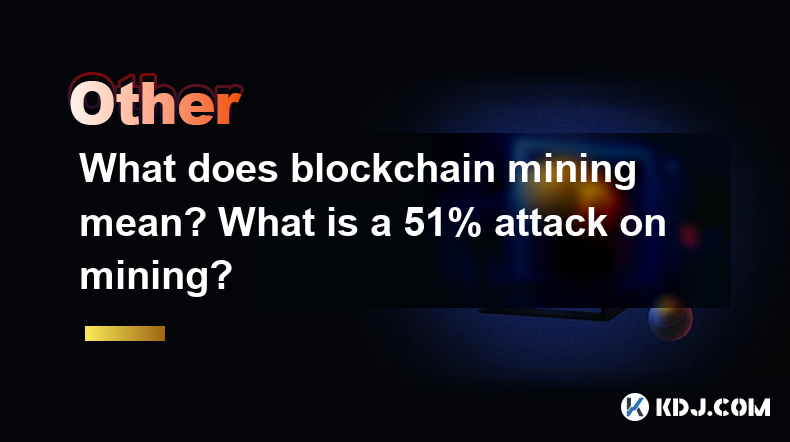
Blockchain mining is a critical process in the world of cryptocurrencies, particularly those that use proof-of-work (PoW) consensus mechanisms like Bitcoin. Mining involves using computational power to solve complex mathematical puzzles, which, when solved, validate and add new transactions to the blockchain. Miners are incentivized to participate through rewards in the form of the cryptocurrency they are mining. This process not only secures the network but also introduces new coins into circulation. The difficulty of these puzzles adjusts periodically to maintain a consistent block time, ensuring the network's stability and security.
How Does Blockchain Mining Work?
Blockchain mining works by having miners compete to solve cryptographic puzzles. Each miner, or mining pool, uses specialized hardware known as ASICs (Application-Specific Integrated Circuits) to perform numerous hash functions per second. The first miner to find a hash that meets the network's criteria gets to add a new block to the blockchain and is rewarded with newly minted coins and transaction fees. This process is known as "finding a block." The mining difficulty adjusts approximately every two weeks in Bitcoin to ensure that blocks are added roughly every ten minutes, regardless of the total computational power of the network.
What Are the Key Components of Mining?
The key components of mining include the mining hardware, mining software, and a reliable internet connection. Miners use ASICs, which are designed specifically for mining cryptocurrencies. These devices are more efficient and powerful than general-purpose computers. Mining software connects the hardware to the blockchain network, allowing miners to receive and solve the cryptographic puzzles. A stable internet connection is crucial as miners need to stay connected to the network to receive new transactions and submit their solutions. Additionally, miners often join mining pools to combine their computational resources and increase their chances of earning rewards.
What Is a 51% Attack on Mining?
A 51% attack, also known as a majority attack, occurs when a single entity or group gains control of more than half of the total mining power on a blockchain network. This level of control allows the attacker to manipulate the blockchain by double-spending coins, preventing the confirmation of new transactions, or reversing transactions that were previously confirmed. The attacker can create a longer chain of blocks than the rest of the network, which other nodes will accept as the valid chain. This type of attack is particularly dangerous because it undermines the trust and security that blockchains are supposed to provide.
How Does a 51% Attack Work?
In a 51% attack, the attacker uses their majority control to mine new blocks faster than the rest of the network. They can then create a private fork of the blockchain, where they can include or exclude transactions as they see fit. Once they have a longer chain than the public one, they release it to the network, which then accepts it as the valid chain. This allows the attacker to double-spend coins by spending them in the public chain and then reversing the transaction in their private chain. The attack is more feasible on smaller networks with less total hash power, making them more vulnerable to such attacks.
What Are the Consequences of a 51% Attack?
The consequences of a 51% attack can be severe for a blockchain network. It can lead to a loss of trust in the network, causing the value of the cryptocurrency to plummet. Users may lose confidence and move their funds to other, more secure networks. Additionally, the ability to double-spend coins can result in significant financial losses for individuals and businesses that accept the cryptocurrency. The attack can also disrupt the normal functioning of the network, preventing new transactions from being confirmed and causing delays and uncertainty. Overall, a successful 51% attack can have long-lasting negative effects on the affected blockchain.
How Can a Blockchain Network Prevent a 51% Attack?
Preventing a 51% attack involves several strategies. One approach is to increase the total hash power of the network, making it more difficult for any single entity to gain control. This can be achieved by encouraging more miners to join the network and by improving the efficiency of mining hardware. Another strategy is to implement stronger consensus mechanisms, such as proof-of-stake (PoS), which are less vulnerable to 51% attacks. Additionally, networks can implement monitoring systems to detect and respond to potential attacks quickly. Finally, educating users about the risks and encouraging them to use secure practices can help mitigate the impact of such attacks.
What Are the Alternatives to Proof-of-Work Mining?
While proof-of-work (PoW) is the most well-known mining method, there are several alternatives that aim to address its limitations. Proof-of-stake (PoS) is one such alternative, where validators are chosen to create new blocks based on the number of coins they hold and are willing to "stake" as collateral. This method is more energy-efficient and less susceptible to 51% attacks. Another alternative is delegated proof-of-stake (DPoS), where coin holders vote for a small number of delegates to validate transactions and create blocks. These alternatives offer different trade-offs in terms of security, decentralization, and energy consumption.
What Is the Role of Mining Pools in Blockchain Mining?
Mining pools play a crucial role in blockchain mining by allowing individual miners to combine their computational resources and share the rewards. This increases the chances of finding a block and receiving a reward, making mining more accessible to those with less powerful hardware. Mining pools operate by distributing the work among their members and then sharing the rewards proportionally based on the amount of work each member contributed. While joining a mining pool can increase the frequency of rewards, it also means sharing those rewards with other members. Some popular mining pools include Slush Pool, Antpool, and F2Pool.
What Are the Challenges of Blockchain Mining?
Blockchain mining faces several challenges, including high energy consumption, the need for specialized hardware, and the risk of centralization. The energy required to mine cryptocurrencies, especially those using PoW, is significant and has raised environmental concerns. The need for ASICs, which are expensive and not easily accessible to everyone, can create barriers to entry for new miners. Additionally, the concentration of mining power in the hands of a few large mining pools can lead to centralization, which goes against the decentralized ethos of blockchain technology. These challenges continue to be areas of active research and development within the cryptocurrency community.
What Is the Future of Blockchain Mining?
The future of blockchain mining is likely to involve a shift towards more sustainable and efficient methods. As concerns about the environmental impact of PoW mining grow, there is increasing interest in alternatives like PoS and other consensus mechanisms. Technological advancements may also lead to more energy-efficient mining hardware. Additionally, the rise of decentralized finance (DeFi) and other blockchain applications may drive the development of new mining models that are better suited to these use cases. As the cryptocurrency ecosystem continues to evolve, so too will the methods and technologies used for mining.
Common Questions Related to Blockchain Mining and 51% Attacks
Q: What is the primary purpose of blockchain mining?
A: The primary purpose of blockchain mining is to validate and add new transactions to the blockchain, secure the network, and introduce new coins into circulation.
Q: How does a miner get rewarded for mining a block?
A: A miner gets rewarded with newly minted coins and transaction fees when they successfully mine a block and add it to the blockchain.
Q: What is the significance of the mining difficulty in blockchain networks?
A: The mining difficulty adjusts to maintain a consistent block time, ensuring the network's stability and security by making it harder or easier to mine new blocks based on the total computational power of the network.
Q: What makes a 51% attack possible?
A: A 51% attack becomes possible when a single entity or group gains control of more than half of the total mining power on a blockchain network, allowing them to manipulate the blockchain.
Q: Can a 51% attack be prevented?
A: While it is challenging to completely prevent a 51% attack, strategies such as increasing the total hash power of the network, implementing stronger consensus mechanisms, and using monitoring systems can help mitigate the risk.
Q: What are some alternatives to proof-of-work mining?
A: Alternatives to proof-of-work mining include proof-of-stake (PoS), delegated proof-of-stake (DPoS), and other consensus mechanisms that aim to be more energy-efficient and less susceptible to 51% attacks.
Q: How do mining pools help individual miners?
A: Mining pools help individual miners by allowing them to combine their computational resources and share the rewards, increasing their chances of finding a block and receiving a reward.
Q: What are the main challenges facing blockchain mining?
A: The main challenges facing blockchain mining include high energy consumption, the need for specialized hardware, and the risk of centralization.
Q: What trends are shaping the future of blockchain mining?
A: Trends shaping the future of blockchain mining include a shift towards more sustainable and efficient methods, technological advancements in mining hardware, and the rise of decentralized finance and other blockchain applications.
Disclaimer:info@kdj.com
The information provided is not trading advice. kdj.com does not assume any responsibility for any investments made based on the information provided in this article. Cryptocurrencies are highly volatile and it is highly recommended that you invest with caution after thorough research!
If you believe that the content used on this website infringes your copyright, please contact us immediately (info@kdj.com) and we will delete it promptly.
- Bitcoin (BTC) Price Prediction: Will BTC Break Out Above $86,000 to Signal the Start of a Recovery?
- 2025-04-03 07:05:12
- Recent market activity shows a split in altcoin performance.
- 2025-04-03 07:05:12
- Publicly Traded Businesses Continuously Buying Bitcoin ($BTC) to Demonstrate Its Emerging Significance
- 2025-04-03 07:00:14
- Credefi Launches Its NFT Bonds Product on the Polytrade Marketplace
- 2025-04-03 07:00:14
- What If the Next Big Crypto Boom Isn't in Bitcoin or Ethereum—but in Meme Coins?
- 2025-04-03 06:55:13
- Despite Price Drop, Shibarium Network Processes Over 1 Billion Transactions
- 2025-04-03 06:55:13
Related knowledge
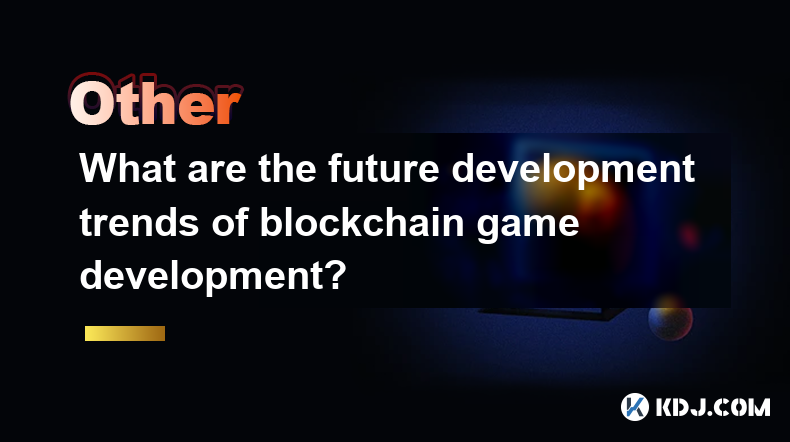
What are the future development trends of blockchain game development?
Apr 03,2025 at 05:00am
Blockchain technology has revolutionized various industries, and gaming is no exception. As we look to the future, several trends are set to shape the development of blockchain games. These trends not only promise to enhance the gaming experience but also to integrate blockchain technology more seamlessly into the gaming ecosystem. Let's explore these t...
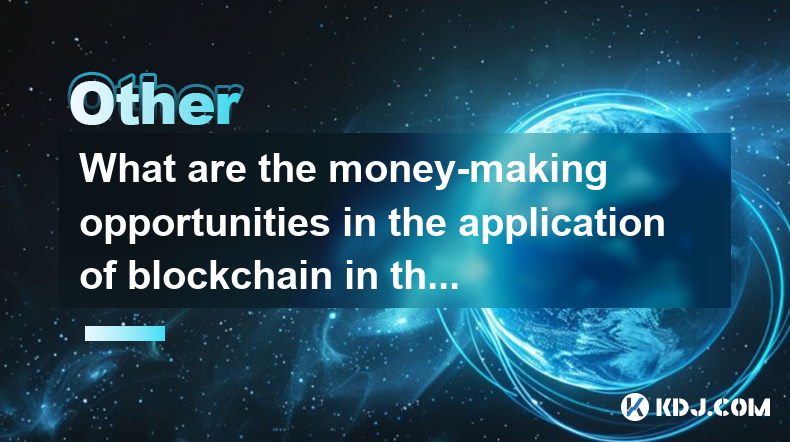
What are the money-making opportunities in the application of blockchain in the medical industry?
Apr 03,2025 at 03:35am
The integration of blockchain technology into the medical industry presents a myriad of money-making opportunities that can revolutionize healthcare systems. Blockchain's inherent characteristics, such as transparency, security, and immutability, make it an ideal solution for various medical applications. By leveraging blockchain, companies can develop ...
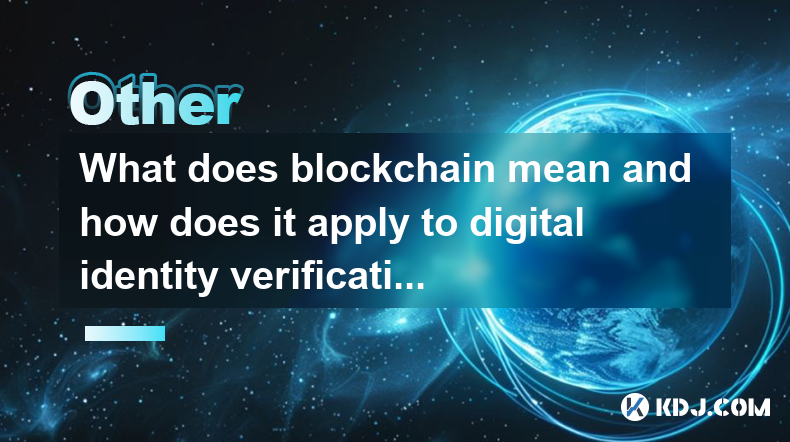
What does blockchain mean and how does it apply to digital identity verification?
Apr 03,2025 at 02:21am
Blockchain technology, at its core, is a decentralized and distributed digital ledger used to record transactions across numerous computers. This ensures that the recorded data cannot be altered retroactively without the alteration of all subsequent blocks and the consensus of the network. The concept of blockchain was initially devised for the digital ...
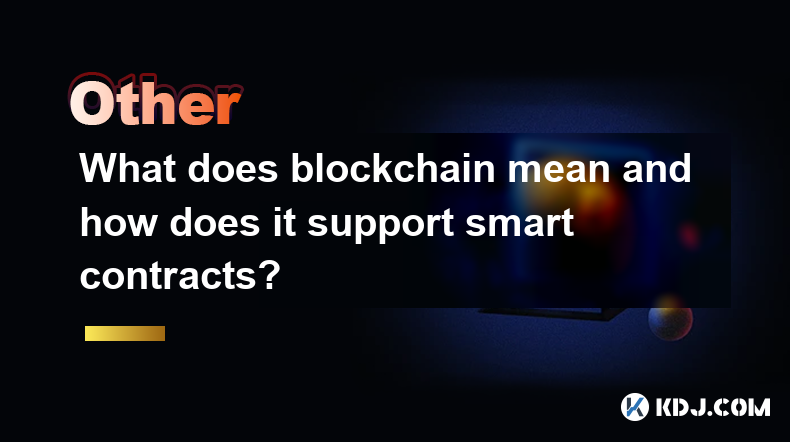
What does blockchain mean and how does it support smart contracts?
Apr 03,2025 at 02:28am
Blockchain technology is a decentralized, distributed ledger that records transactions across numerous computers. It ensures that once data is recorded, it cannot be altered retroactively without the alteration of all subsequent blocks and the consensus of the network. This technology is the backbone of cryptocurrencies like Bitcoin and Ethereum. Blockc...
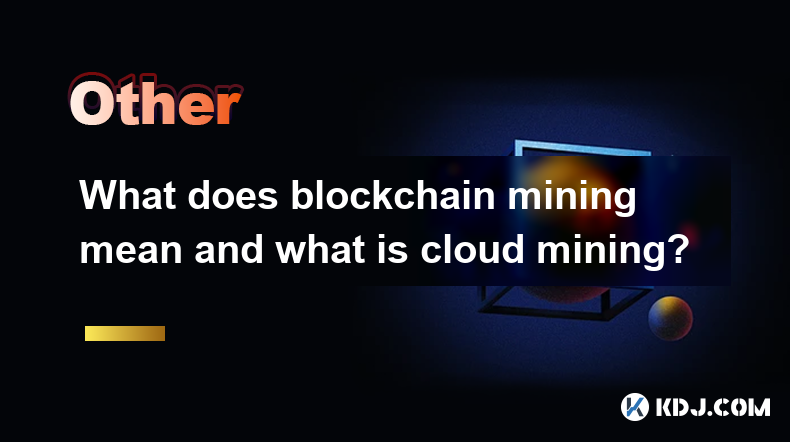
What does blockchain mining mean and what is cloud mining?
Apr 03,2025 at 02:01am
Blockchain mining is the process by which new transactions are verified and added to the blockchain ledger. It involves solving complex mathematical problems using computational power, which results in the creation of new cryptocurrency units as a reward. Miners compete to solve these problems, and the first one to find the solution gets to add a new bl...
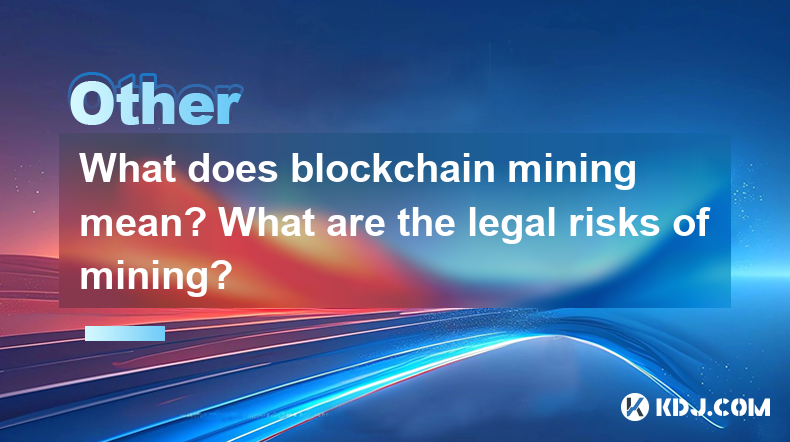
What does blockchain mining mean? What are the legal risks of mining?
Mar 31,2025 at 05:07pm
Blockchain mining is the process by which transactions are verified and added to the public ledger, known as the blockchain. Miners use powerful computers to solve complex mathematical problems, which, once solved, allow them to add a block of transactions to the blockchain. In return, miners are rewarded with cryptocurrency, typically Bitcoin. This pro...

What are the future development trends of blockchain game development?
Apr 03,2025 at 05:00am
Blockchain technology has revolutionized various industries, and gaming is no exception. As we look to the future, several trends are set to shape the development of blockchain games. These trends not only promise to enhance the gaming experience but also to integrate blockchain technology more seamlessly into the gaming ecosystem. Let's explore these t...

What are the money-making opportunities in the application of blockchain in the medical industry?
Apr 03,2025 at 03:35am
The integration of blockchain technology into the medical industry presents a myriad of money-making opportunities that can revolutionize healthcare systems. Blockchain's inherent characteristics, such as transparency, security, and immutability, make it an ideal solution for various medical applications. By leveraging blockchain, companies can develop ...

What does blockchain mean and how does it apply to digital identity verification?
Apr 03,2025 at 02:21am
Blockchain technology, at its core, is a decentralized and distributed digital ledger used to record transactions across numerous computers. This ensures that the recorded data cannot be altered retroactively without the alteration of all subsequent blocks and the consensus of the network. The concept of blockchain was initially devised for the digital ...

What does blockchain mean and how does it support smart contracts?
Apr 03,2025 at 02:28am
Blockchain technology is a decentralized, distributed ledger that records transactions across numerous computers. It ensures that once data is recorded, it cannot be altered retroactively without the alteration of all subsequent blocks and the consensus of the network. This technology is the backbone of cryptocurrencies like Bitcoin and Ethereum. Blockc...

What does blockchain mining mean and what is cloud mining?
Apr 03,2025 at 02:01am
Blockchain mining is the process by which new transactions are verified and added to the blockchain ledger. It involves solving complex mathematical problems using computational power, which results in the creation of new cryptocurrency units as a reward. Miners compete to solve these problems, and the first one to find the solution gets to add a new bl...

What does blockchain mining mean? What are the legal risks of mining?
Mar 31,2025 at 05:07pm
Blockchain mining is the process by which transactions are verified and added to the public ledger, known as the blockchain. Miners use powerful computers to solve complex mathematical problems, which, once solved, allow them to add a block of transactions to the blockchain. In return, miners are rewarded with cryptocurrency, typically Bitcoin. This pro...
See all articles
























































































